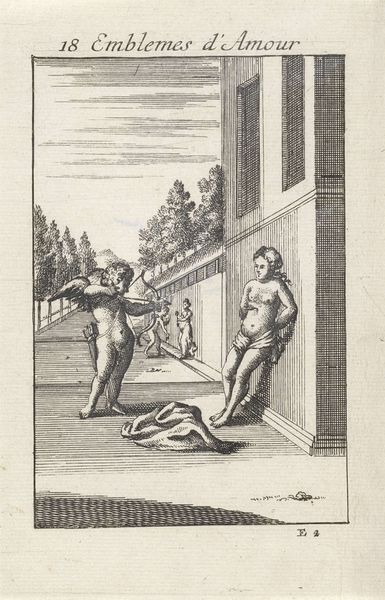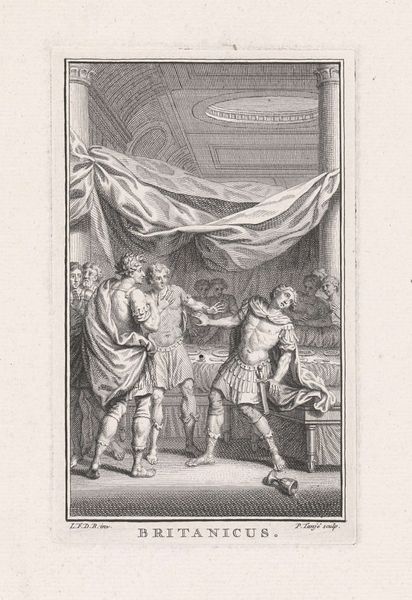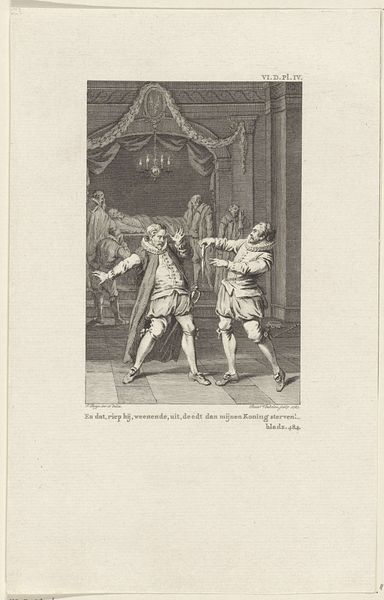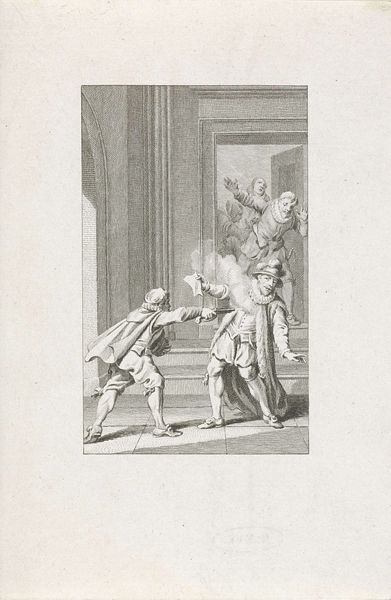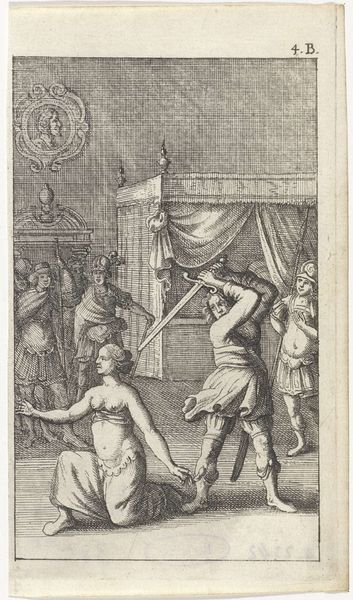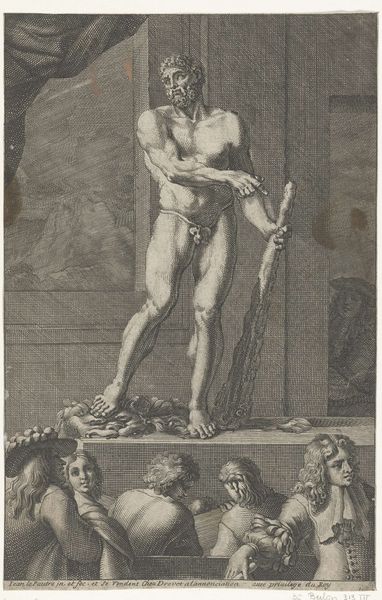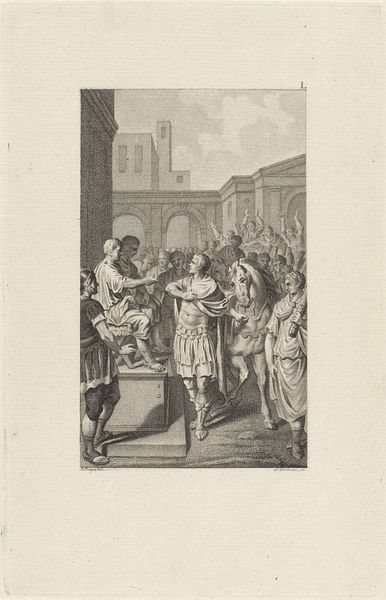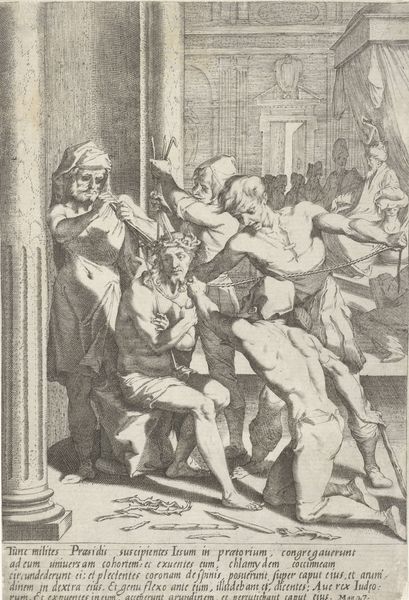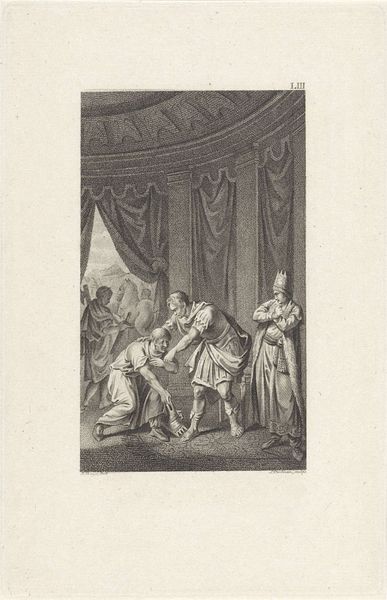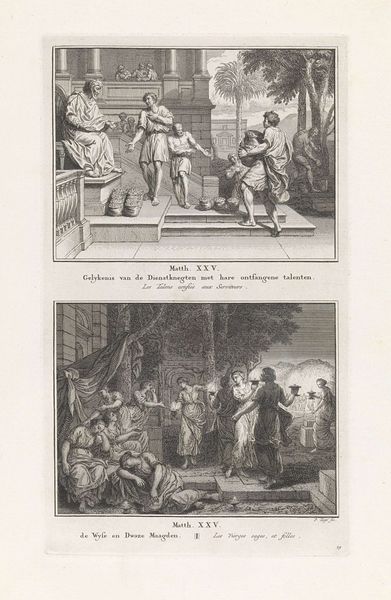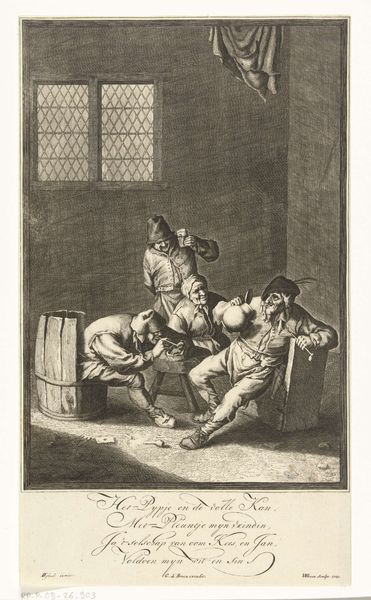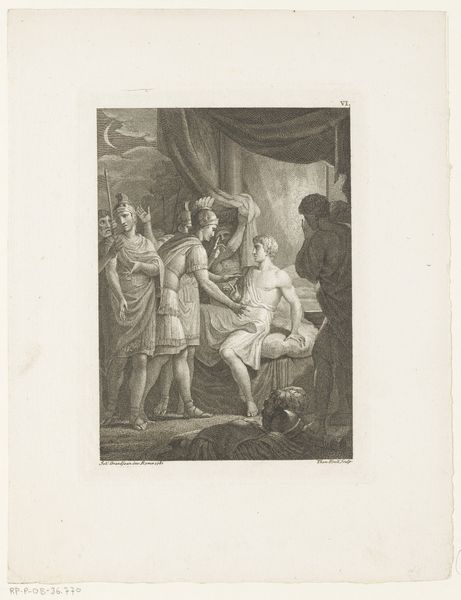
print, etching, engraving
#
neoclacissism
#
narrative-art
# print
#
etching
#
old engraving style
#
figuration
#
19th century
#
history-painting
#
engraving
Dimensions: height 158 mm, width 99 mm
Copyright: Rijks Museum: Open Domain
Curator: This print, entitled "Lamekis in de gevangenis," was created in 1786 by Emmanuel Jean de Ghendt. It’s an engraving, an etching even, a testament to the neoclassical style flourishing at the time, here on display at the Rijksmuseum. Editor: The claustrophobia in this image is palpable! I can practically feel the weight of those stone walls closing in. It’s like a nightmare unfolding in shades of gray, or some half-forgotten story trying to claw its way back into consciousness. Curator: Absolutely. Ghendt’s manipulation of light and shadow heightens the drama. The contrast between the brightly lit figures and the dark prison interior accentuates their vulnerability, using chiaroscuro to drive the emotional narrative. The figures’ placement is also quite important to the image. Editor: Those figures! Are they wrestling? It’s so ambiguous. Is it struggle? Is it brotherly embrace gone wrong? There's a desperation in their intertwined forms, amplified by the presence of those cold, detached guards. Curator: The composition serves to explore a certain dichotomy in neoclassical art, doesn’t it? Ghendt stages an almost theatrical encounter. He draws you in only to highlight the themes of captivity, resistance, and what must be ultimate betrayal within an archaic context. Note also how the spears converge upon them. Editor: Archaic is the word. The scene definitely feels plucked from some forgotten myth or biblical tale, even with all this cold neoclassicism surrounding it. There is this universal sense of humanity trapped within a cycle of conflict. That sort of melancholy permeates everything, really. Curator: Yes. Ghendt compels us to engage with these universal motifs through a rigorous classical language, refined linearity and anatomical precision are keys here to create this picture from what appear to be the good ol’ days. Editor: Funny how the "good ol’ days" usually look better in art than they ever felt in real life. It reminds me to stop romanticizing the past so much. Thanks, Lamekis, for the little existential nudge! Curator: Indeed. It encourages critical assessment—a mark of successful art. A fruitful dialogue sparked from observing form and history together.
Comments
No comments
Be the first to comment and join the conversation on the ultimate creative platform.
